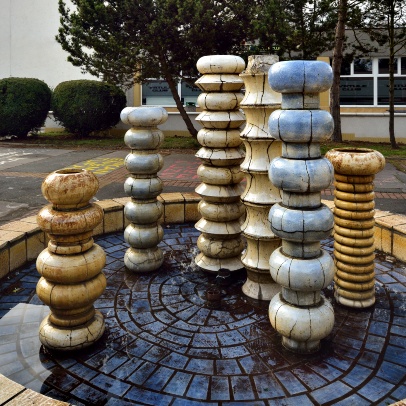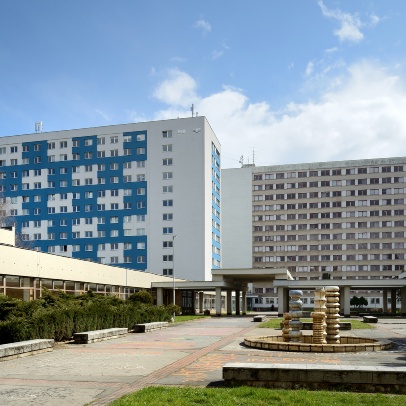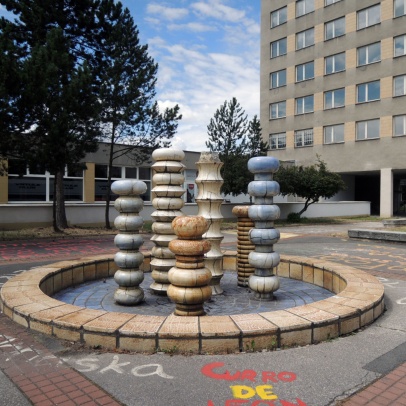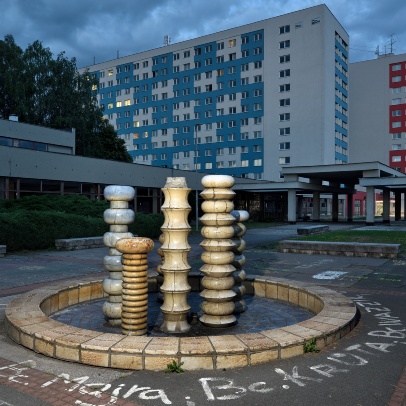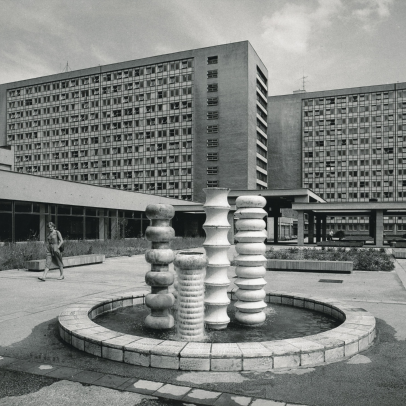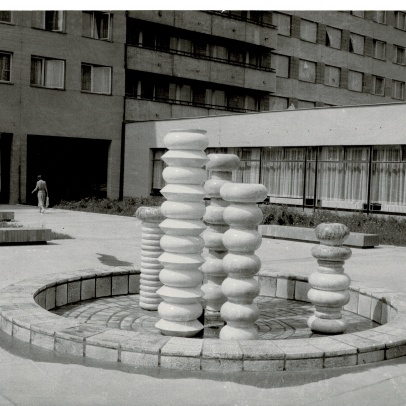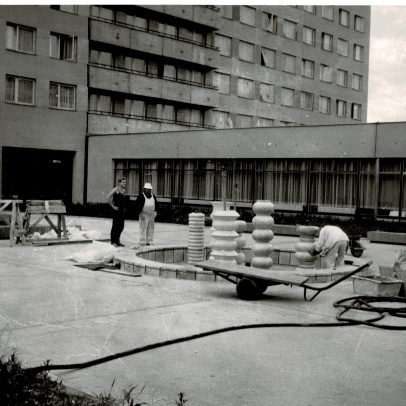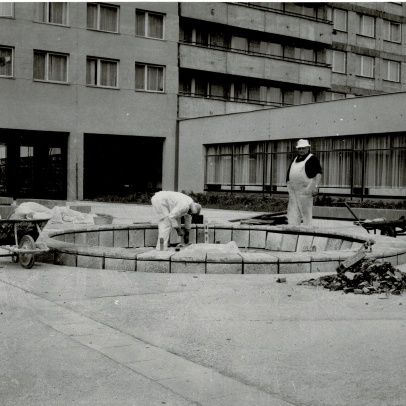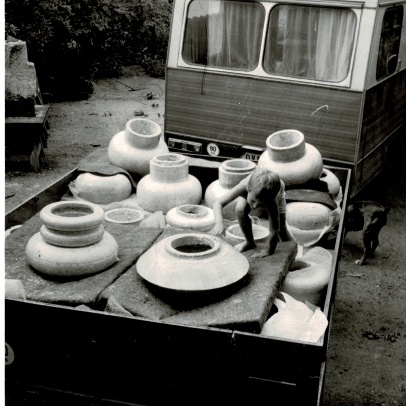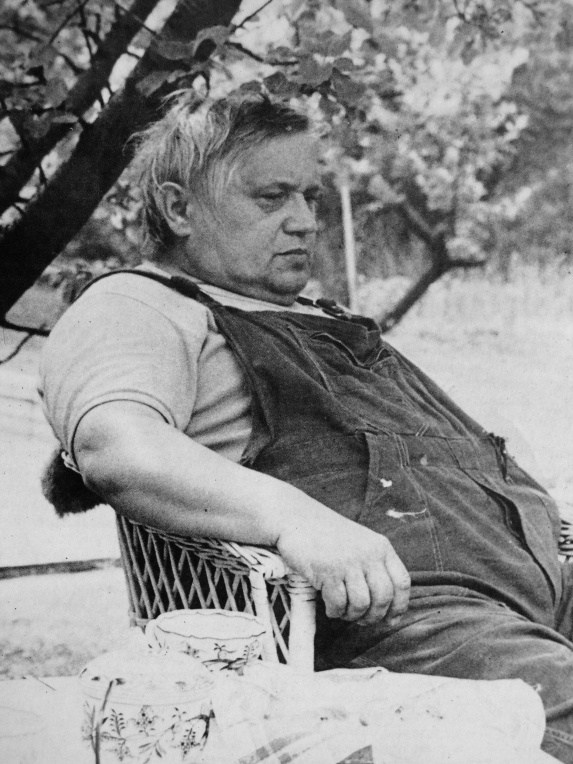Name: The Fountain
Author: Jiří Myszak (architectural cooperation Vladimír Svoboda)
Dating: 1979–1982
Location: in the exterior in the atrium of the VŠB-TUO dormitories in Ostrava-Poruba
Execution: a fountain made of glazed fireclay consisting of six segmented columns in ochre and blue shades, with a height ranging from 127 to 223 cm placed in a circular water tank with a diameter of 5 m
ROUND SHAPES WITHOUT WATER
The Fountain installation is a group of six profiled columns made up of differently shaped ceramic discs. The columns are irregularly placed in a circular tank with a raised curb and paved ceramic, blue glazed bottom. The individual segments of the columns are placed on top of each other and inside are joined and reinforced with concrete filling; their surface is glazed in creamy, ochre, and blue shades. The water was initially running down from the tops of the columns and was collected in a tank.
The Fountain belongs to Myszak’s ceramic art collection. It is a purely decorative work which was supposed to decorate the atrium at the student halls of residence and to liven up the atmosphere of the space with the presence of an area of flowing water. Today, the work of art is no longer connected to an element of water, and it revives the walk-through atrium mostly due to its shape and colour. As for its creation in terms of time, the work went through similar delays as many other art pieces: Jiří Myszak won the selection procedure by beating a design by Karel Vašut in the autumn of 1979. The deadlines for the work delivery to the site, the finances, as well as the handicrafts workshops that were expected to glaze and fire the ceramics, changed several times. After other difficulties with the installation, The Fountain was finally approved in the summer of 1982.
Myszak’s decorative work is, despite its simplicity, a proof of his elemental sense for sculptural shape. The author’s work is characterized by flowing, smooth modelling, regardless of whether he created the curves of the female body or the concave or convex shapes of non-figurative forms. Many of his fireclay works respect the raw colour tones of clay, but he can also work in fine coloured compositions.
However, one more “invisible” work remains on the Poruba campus: the space was supposed to be, together with The Fountain, fitted with eighteen planters with some plastic decorated surface. Today, it remains a mystery whether this concurrently created work had ever been made and installed. The witnesses no longer speak, and The Fountain is the only object found in period photographs.
